The 66th president of the American Nuclear Society takes the helm at a time of great change, both internally and externally.
 Mary Lou Dunzik-Gougar said she feels very fortunate to be taking on the role of president of the American Nuclear Society at this moment in history. “By that, I don’t mean at the time of the COVID-19 pandemic,” she quickly clarified. “I mean at a time when we are making exciting and transformational changes to the Society.”
Mary Lou Dunzik-Gougar said she feels very fortunate to be taking on the role of president of the American Nuclear Society at this moment in history. “By that, I don’t mean at the time of the COVID-19 pandemic,” she quickly clarified. “I mean at a time when we are making exciting and transformational changes to the Society.”
These changes are described in the aptly named Change Plan 2020, which was developed by a group that included ANS past presidents Andy Klein, Gene Grecheck, and Bob Coward, with input from members, including Dunzik-Gougar, and was approved by the ANS Board of Directors at the November 2019 ANS Winter Meeting in Washington, D.C. Already, Change Plan 2020 has reshaped the way the Society interacts with its members, including a new, greatly improved website and an updated, more vibrant and informative Nuclear News magazine. The plan has also reorganized the Society to create, in the words of ANS’s new executive director and chief executive officer, Craig Piercy, a “more streamlined, less siloed organization that is better equipped to meet our members’ needs going forward.”
The 40-year effort to make research reactors safer and more secure has led to the conversion of 71 reactors worldwide from HEU fuel to LEU.
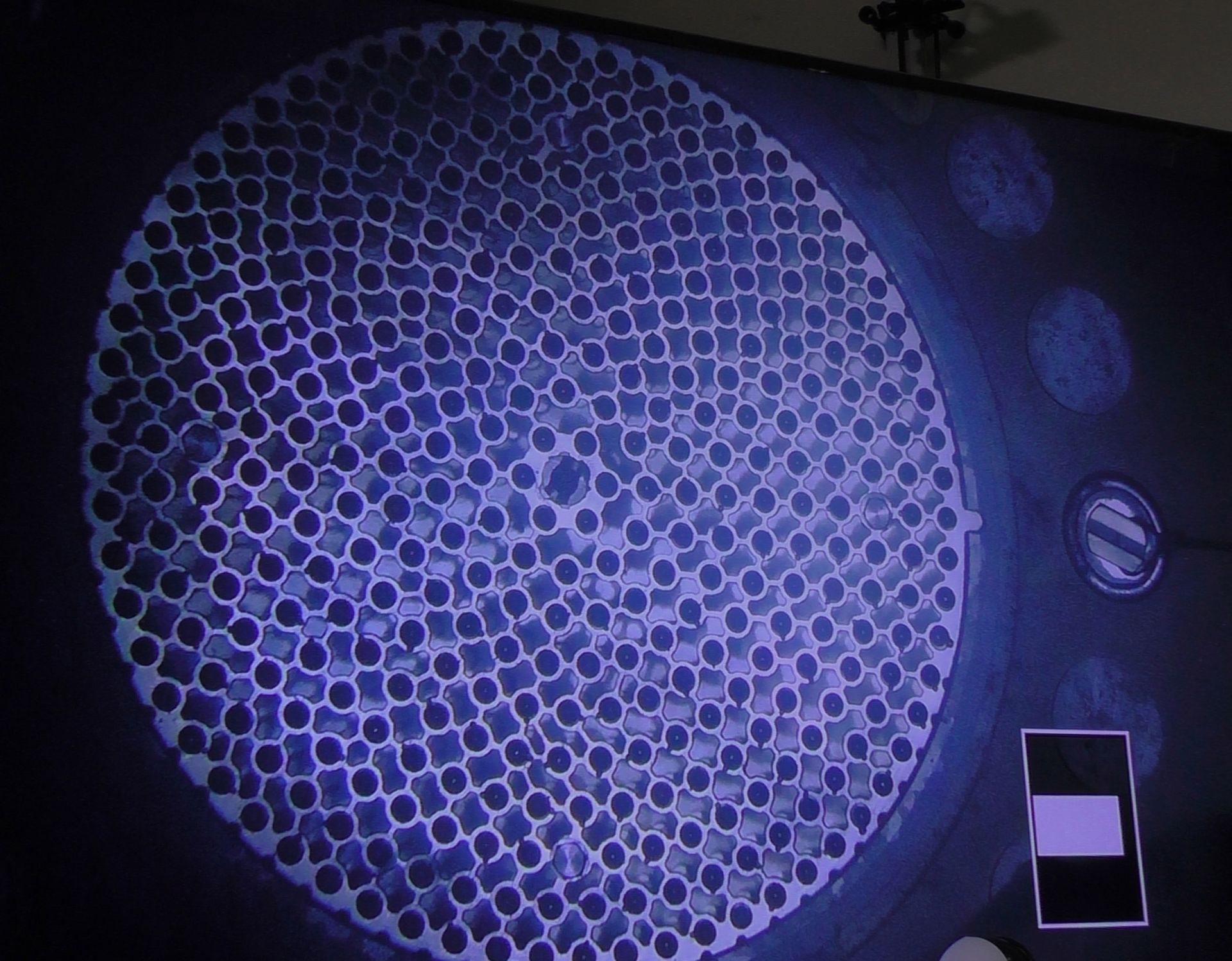
The Ghana Research Reactor-1, located in Accra, Ghana, was converted from HEU fuel to LEU in 2017. Photo: Argonne National Laboratory
In late 2018, Nigeria’s sole operating nuclear research reactor, NIRR-1, switched to a safer uranium fuel. Coming just 18 months on the heels of a celebrated conversion in Ghana, the NIRR-1 reboot passed without much fanfare. However, the switch marked an important global milestone: NIRR-1 was the last of Africa’s 11 operating research reactors to run on high-enriched uranium fuel.
The 40-year effort to make research reactors safer and more secure by replacing HEU fuel with low-enriched uranium is marked by a succession of quiet but immeasurably significant milestones like these. Before Africa, a team of engineers from many organizations, including the U.S. Department of Energy’s Argonne National Laboratory, concluded its conversion work in South America and Australia. Worldwide, 71 reactors in nearly 40 countries have undergone conversions to LEU, defined as less than 20 percent uranium-235. Another 31 research reactors have been permanently shut down.
As industry steps up its efforts to design, develop, and deploy advanced reactors, codes and standards must be developed to support these technologies. Toward that end, ANS and the Nuclear Energy Institute collaborated to host a virtual workshop on June 23 for industry partners to discuss the development of advanced reactor codes and standards.
NEI’s senior director of new reactors, Marc Nichol, welcomed more than 400 attendees to the online meeting, and ANS’s director of government relations, John Starkey, outlined the meeting logistics.
CORTEX aims to enable the early detection, localization, and characterization of anomalies in nuclear reactors while they are operating.
We often define noise as an unwanted disturbance, especially acoustic in nature. Neutron noise, by contrast, is a direct measure of the dynamics of a nuclear core. It can be used for core monitoring without disturbing plant operation and by using the existing core instrumentation. The European CORTEX project aims to develop an innovative core monitoring technique using neutron noise, while capitalizing on the latest developments in neutronic modeling, signal processing, and artificial intelligence.
Digital engineering, which uses advanced technologies to capture data and optimize design in a digital environment, is being applied for the first time to a DOE nuclear project and has already realized substantial benefits.
With a new generation of nuclear reactors in the works, Idaho National Laboratory has embraced digital engineering (DE) as a means of achieving the same efficiencies that companies in the private sector have been able to realize in everything from concert halls to aircraft engines.
DE—using advanced technologies to capture data and craft design in a digitized environment—has been evolving since the 1990s. For Mortenson Construction, a worldwide construction firm, using virtual design and construction resulted in a cumulative 600 days saved over 416 projects and a 25 percent increase in productivity. By building digital twins for assets, systems, and processes, DE has avoided more than $1.05 billion in customer, production, and mechanical losses.
Leaders at INL recognized in 2018 that DE could be useful in the design and construction of new commercial and test reactors. Managing construction costs, timing, and performance will be essential to maintain U.S. competitiveness.
Risk-informed and performance-based approaches to nuclear safety have saved money and improved safety for current reactors and have the potential to offer even greater benefits for advanced reactors.
June 26, 2020, 3:05PMNuclear NewsN. Prasad Kadambi, Edward Wallace, James O’Brien, and Robert Youngblood Since the 1980s, the nuclear power industry in the United States has worked to enhance the regulatory framework for nuclear facilities by making it more risk-informed and performance-based (RIPB). This has had some success in improving safety and reducing regulatory burden by focusing resources on the most risk--significant areas and allowing greater flexibility in choosing ways to achieve desired safety outcomes. However, there are further opportunities for the use of RIPB approaches in addressing current regulations and applying implementation tools, and in developing new RIPB regulations and advanced tools to further sharpen the focus on risk and performance outcomes.
Material cost reduction may be realized through cost-effective procurement scenarios, such as application of commercial grade dedication, reverse engineering, and electronic component repairs.

The Utilities Service Alliance’s organizational banners.
The Utilities Service Alliance (USA) was founded in 1996. Current membership stretches from coast-to-coast and includes eight utilities and nine nuclear stations: Energy Northwest, Columbia; Luminant, Comanche Peak; Indiana Michigan Power Company, Cook; Nebraska Public Power District, Cooper; DTE Energy, Fermi; Xcel Energy, Monticello and Prairie Island; STP Nuclear Operating Company, South Texas Project; and Talen Energy, Susquehanna. These plants represent 14 reactors (six boiling water reactors and eight pressurized water reactors) and more than 15,000 MWe of generation.
The USA Material Cost Reduction (MCR) project kicked off in January 2017. The Nuclear Energy Institute’s Delivering the Nuclear Promise initiative was in full swing as the utilities’ chief nuclear officers created multiple focus areas for cost reductions at the plants.
U.K. government funding for nuclear research and innovation in advanced fuels and recycling is having a significant impact and reenergizing the U.K. research base.
June 12, 2020, 2:55PMNuclear NewsPaul Nevitt, Dave Goddard, and Robin Taylor 
Fig. 1. Geographical spread of U.K. organizations engaged in the U.K. AFCP, including a number of the world leading U.K. universities. Image: NNL
Called “the first significant public investment in a generation,” the U.K. Advanced Fuel Cycle Program (AFCP) is driving innovation to underpin future nuclear deployment in the United Kingdom. Led jointly by the U.K. Department for Business, Energy and Industrial Strategy and the National Nuclear Laboratory (NNL), the program involves more than 40 U.K. organizations, including a number of world-leading U.K. universities (Fig. 1), and is working with international organizations across more than 10 countries, leveraging U.K. investment into more than £100 million in international programs.
Once again, the U.S. fleet has achieved a new personal best, even as utilities and operators face formidable challenges.
In the early years of the Nuclear News capacity factors survey, any factor over 70 was deemed excellent; any factor under 50 was considered poor. By that standard, all but two operating U.S. power reactors chalked up excellent performance during 2017–2019. A record 809.4 TWh of electricity was generated in the United States from nuclear energy in 2019, according to the U.S. Energy Information Administration (EIA), besting the record of 807.1 TWh set in 2018.
Nuclear News staff developed the capacity factors survey in the early 1980s as a way to identify the most productive reactors in an expanding fleet. Fleet improvement was the industry’s self-identified goal, but no one could anticipate the startlingly rapid pace of improvement, spurred by the Institute of Nuclear Power Operations (INPO), which boosted fleetwide performance to highs that continue today.
Producing packages for radioactive materials takes time, attention to detail, and a thorough commitment to quality assurance.
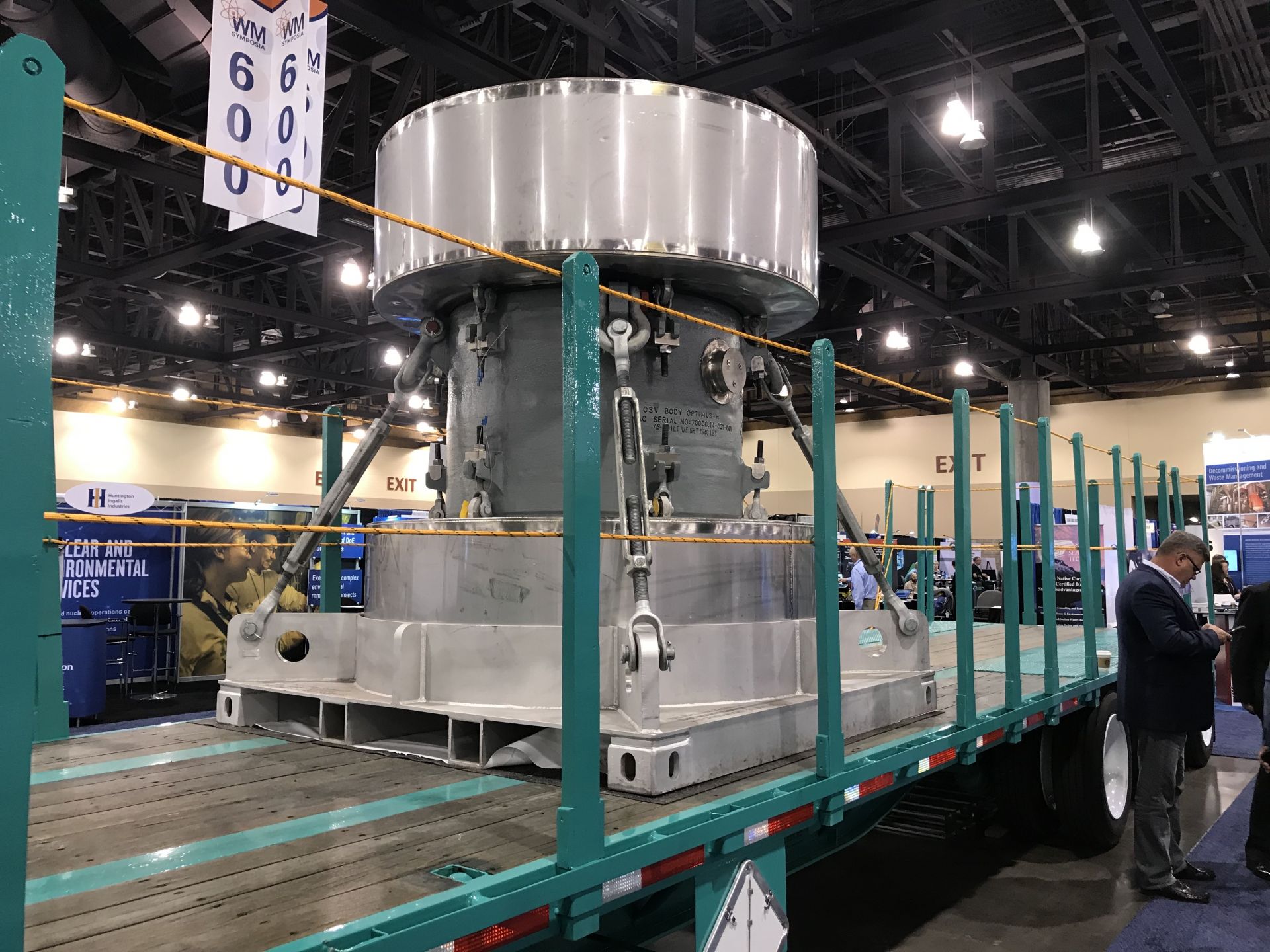
The Optimus-H transport cask on display at the 2020 Waste Management Conference in Phoenix, Ariz.
Jeff England, director of transportation projects for NAC International, pointed to the large stainless steel canister, which looked like a giant-sized silver dumbbell, perched on the flatbed of a semitrailer truck parked in the middle of the expansive exhibit hall in the Phoenix Convention Center. NAC, a provider of nuclear storage, transportation, and consulting services, was using the 2020 Waste Management Conference, held March 8–12 in Phoenix, Ariz., to unveil its newest transport casks, the Optimus-H and Optimus-L.
“These are a different niche,” England said of the casks, which were designed to transport radioactive materials, including remote-handled transuranic waste, high-activity intermediate-level waste, low-enriched uranium, and fissile materials. “You have a lot of [small] drum-sized packages, and you also have a lot of big packages that will hold around 10 55-gallon drums. But there’s not anything in between. We hold a 110-gallon drum capacity.”
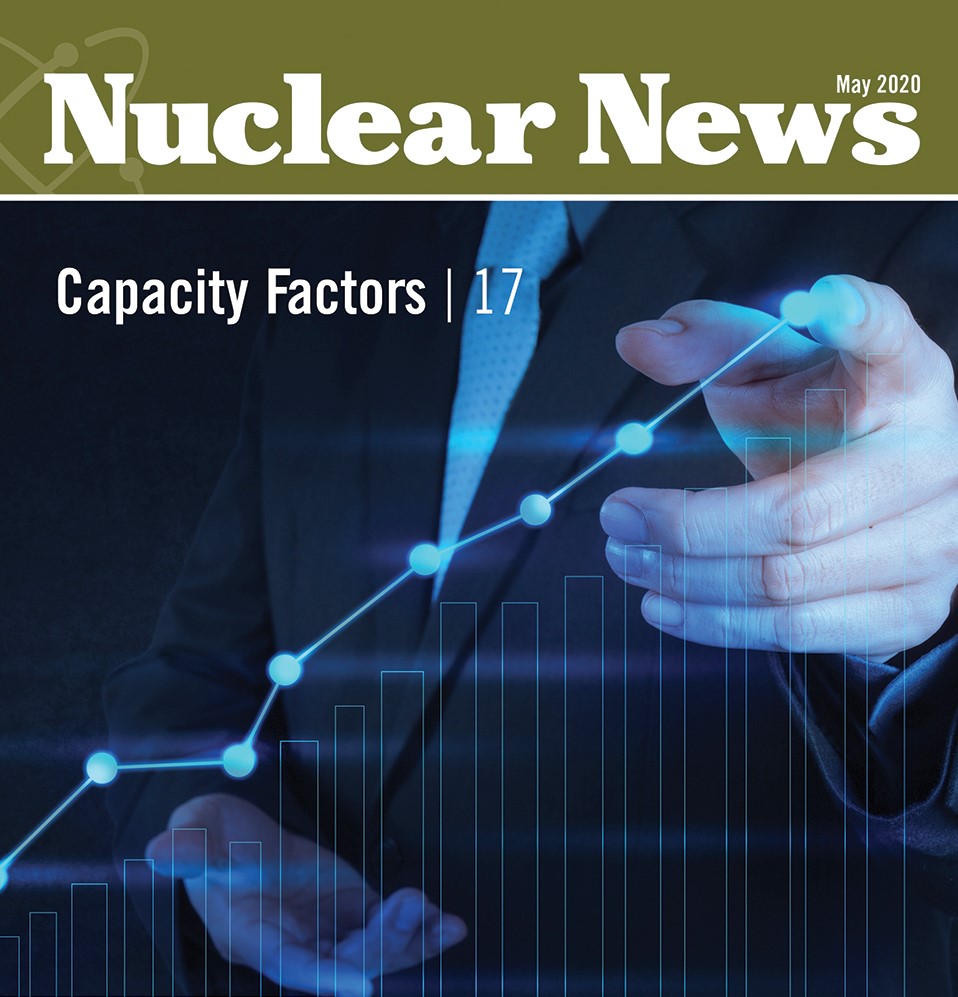 Nuclear power plant performance includes both operational and safety aspects and is an outcome of numerous elements, such as the reliability of equipment, reduction in challenges to plant operations, protection of workers, and proficiency of operations. These elements are inextricably linked to each other and to the safety of each facility. In short, a well-run plant is a safe plant for the workers and the public, and a well-run plant is an efficient plant. By-products of high performance include improved regulatory performance, worker safety, plant reliability, and, most important, public health and safety.
Nuclear power plant performance includes both operational and safety aspects and is an outcome of numerous elements, such as the reliability of equipment, reduction in challenges to plant operations, protection of workers, and proficiency of operations. These elements are inextricably linked to each other and to the safety of each facility. In short, a well-run plant is a safe plant for the workers and the public, and a well-run plant is an efficient plant. By-products of high performance include improved regulatory performance, worker safety, plant reliability, and, most important, public health and safety.
As the nuclear industry pursues a new generation of reactors to meet economic and political realities, the process for developing and qualifying new fuels and materials has come into focus. It’s clear that the 30-year development process the industry has come to expect is no longer viable, just as the economic reality of the current reactor fleet is increasingly coming under pressure from low-cost alternatives, particularly natural gas. To reduce carbon emissions while meeting ever-growing energy needs, new nuclear plants must be built soon.
The DOE’s Transformational Challenge Reactor program is harnessing recent advances in manufacturing, materials, and computational sciences to rapidly build and operate an advanced reactor core.

The TCR program is leveraging an agile approach—one that is centered around continuously informing the process—to accelerate deployment timelines and introduce performance improvements. Image: Adam Malin, ORNL
Soon after Enrico Fermi’s Chicago Pile-1 went critical for a brief duration in December 1942, the construction of the first continuously operating reactor, the X-10 Graphite Reactor, was initiated in February 1943 at Clinton Engineer Works in Oak Ridge, Tenn. On November 4 of that year, a mere nine months after the start of construction, the reactor began operation. This marked the onset of what Alvin M. Weinberg referred to as “the first nuclear era,” during which many reactors of various designs and operating parameters were built and demonstrated across the United States. Forty years ago, the Fast Flux Test Facility was the last U.S. non-light-water reactor to reach criticality, and it has since been decommissioned.
The partial collapse of PUREX Tunnel 1 in 2017 prompted a review of Hanford’s maintenance of the site’s unused, contaminated buildings.
A report released to the public on February 20 by the Government Accountability Office concluded that maintenance inspections at several contaminated excess facilities at the Department of Energy’s Hanford Site, near Richland, Wash., have not been comprehensive and that there are areas of some facilities that personnel infrequently or never enter, either physically or by remote means, to conduct inspections. The GAO reviewed surveillance and maintenance (S&M) requirements and activities at 18 of Hanford’s approximately 800 excess facilities that require cleanup and found that improvements to the site’s S&M program are needed.
BWXT is using advances in manufacturing and fuel to power exciting technology
The United States is pursuing the objective to land humans more than 100 million miles away on Mars, and nuclear power has the potential to be a key technology in getting to the Red Planet and providing power while there. Specifically, nuclear thermal propulsion (NTP) is a promising approach that could enable astronauts to travel from Earth’s orbit to Mars and back in a fraction of the time, and with greater safety, than is available with other options.
ANS Best Oral Presentation/Paper Waste Management 2019
March 10, 2020, 8:42AMRadwaste SolutionsLaura Merlo-Sosa, Hugh Boniface, Richard Prokopowicz, and Sam Suppiah Heavy water is used both for moderating nuclear fission and transporting heat in CANDU reactors. As a result of heavy water use in these systems, tritium is produced in small quantities from thermal neutron activation of deuterium. The presence of tritium in the heavy water contributes to the radiation dose of the reactor staff and radioactive emission from the reactor facility. Tritium dose is usually controlled through design and operating procedures that minimize leaks and limit exposure to the tritiated water. Many of the CANDU operators have also reduced the operational tritium concentration through detritiation of the heavy water from the reactor. Detritiation is carried out in a centralized facility, such as the Tritium Removal Facility in Darlington, which provides this service to Ontario’s nuclear reactor fleet. Detritiation reduces both tritium emission and dose to workers and the public from reactor operation.
As demands for a comprehensive U.S. waste management plan increase, private vendors are certifying new SNF/HLW transportation cask designs.
A large-scale campaign to move spent nuclear fuel and high-level radioactive waste in the United States to a central repository or interim storage site does not appear to be coming anytime soon. External pressures, however, including a growing number of nuclear power plant closures and increased stakeholder demand to remove stranded spent fuel and HLW, are shifting focus to building the infrastructure needed to move large volumes of waste. This includes the design and manufacture of shielded transportation casks for shipping the waste by truck or rail.
In its ongoing effort to keep its criteria relevant, ABET has revised its student outcome and curriculum requirements.
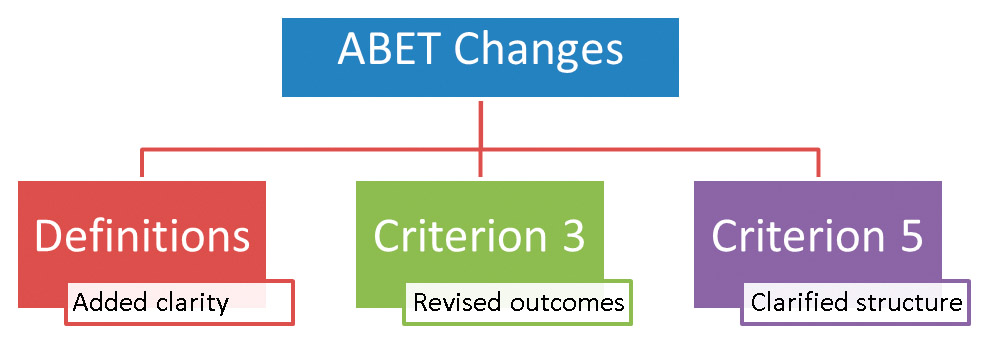 ABET, originally an acronym for the Accreditation Board for Engineering and Technology, is a nonprofit, nongovernmental organization that accredits college and university programs in the disciplines of applied and natural science, computing, engineering, and engineering technology. ABET accredits degrees at the associate, bachelor’s, and master’s levels. Over the years, the organization has expanded its domestic and global accreditation presence, and it currently accredits over 4,000 programs in 32 countries.
ABET, originally an acronym for the Accreditation Board for Engineering and Technology, is a nonprofit, nongovernmental organization that accredits college and university programs in the disciplines of applied and natural science, computing, engineering, and engineering technology. ABET accredits degrees at the associate, bachelor’s, and master’s levels. Over the years, the organization has expanded its domestic and global accreditation presence, and it currently accredits over 4,000 programs in 32 countries.
An updated polymer gel from Argonne National Laboratory proves to be effective in removing radioactive contaminants from a legacy site.
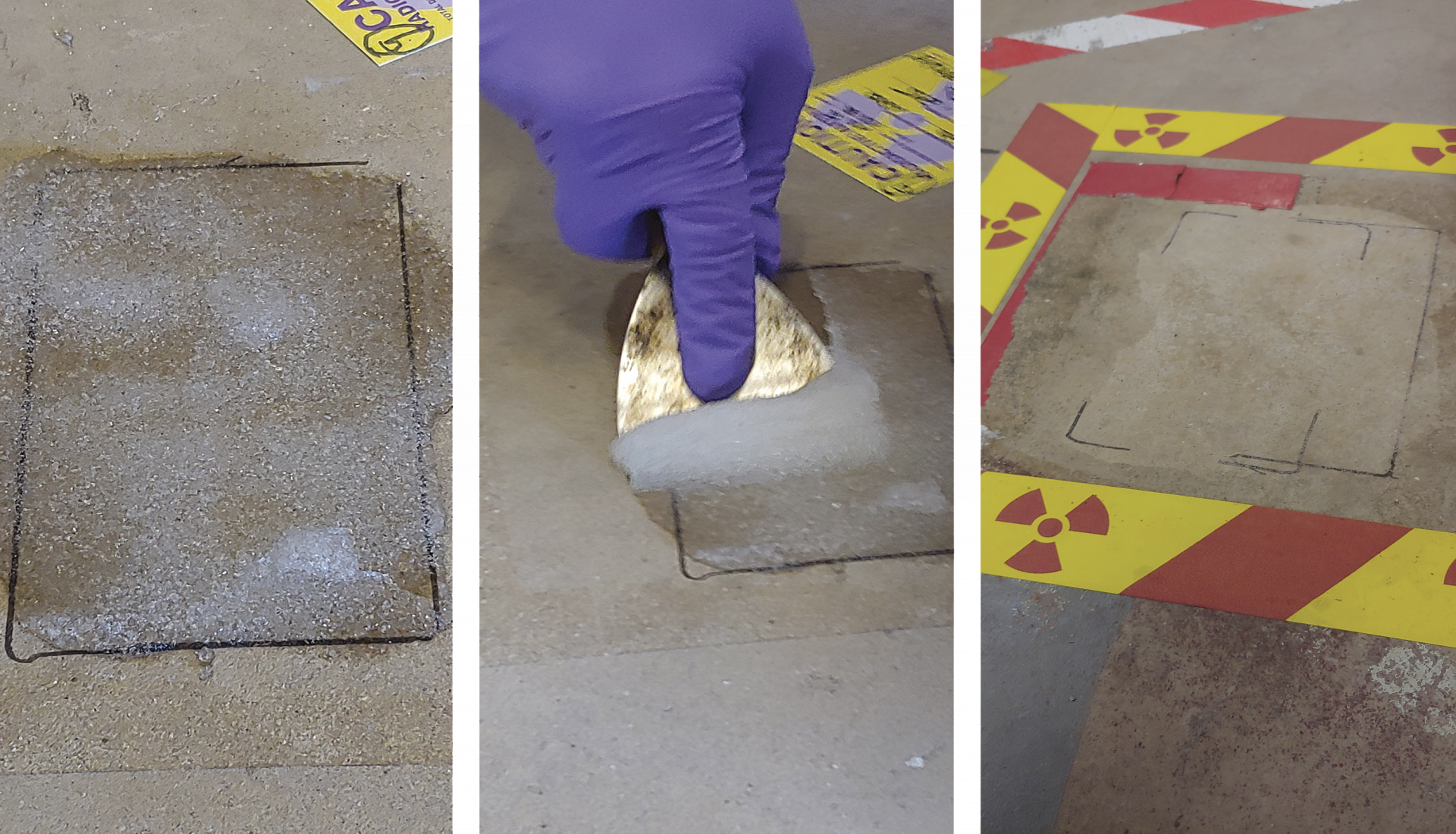
The gel is applied to an area (left), where it is allowed to work for two to three hours before being removed. The final activity of the cleaned area (right) was counted using HPGe and Ludlum alpha/beta radiation detectors. Photos courtesy of ANL.
Current techniques for radiological decontamination often involve debasing or demolishing structures to contain contaminated dust and haul debris away. This is a costly method of decontaminating buildings and structures. If, however, effective nondestructive methods can be found, significant savings are possible. One such method, based on new research from engineers at the Department of Energy’s Argonne National Laboratory in Lemont, Ill., is now available.
The geologic repository for defense-related transuranic waste reached a milestone in 2019.
February 10, 2020, 7:38AMRadwaste SolutionsJef Lucchini, Robert Kehrman, and George Basabilvazo 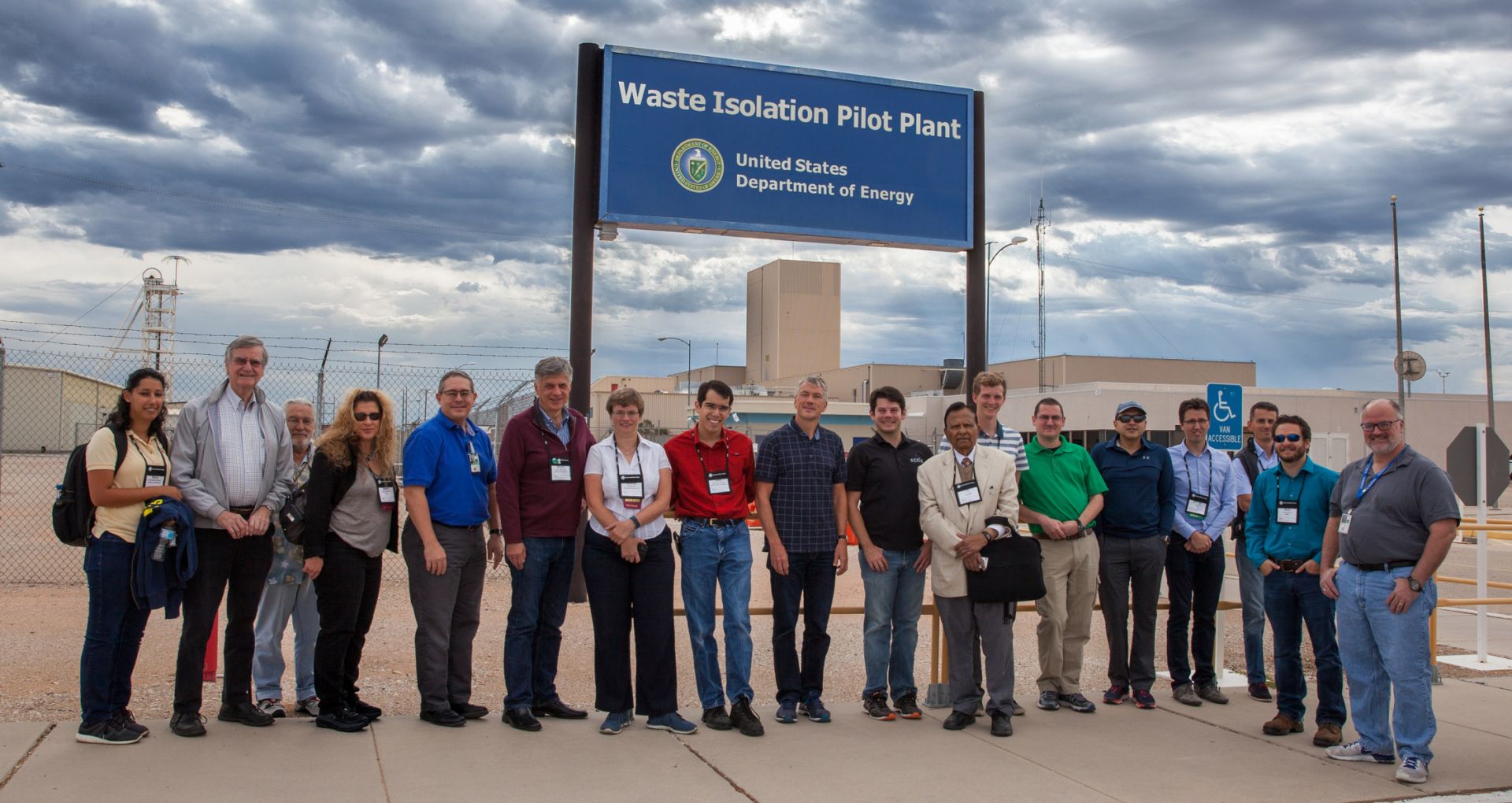
Participants to the 2017 Nuclear Criticality Safety Division topical meeting attended a tour of the WIPP facility, which marked its 20th anniversary this past year. Photos courtesy of WIPP
March 26, 2019, marked the 20th anniversary of the first shipment of transuranic (TRU) waste to the Waste -Isolation Pilot Plant (WIPP) facility in southeastern New Mexico. Celebrations of the 20-year mark of waste operations recognized the role of the WIPP facility in cleaning up legacy TRU waste from 22 generator sites nationwide.
 Mary Lou Dunzik-Gougar said she feels very fortunate to be taking on the role of president of the American Nuclear Society at this moment in history. “By that, I don’t mean at the time of the COVID-19 pandemic,” she quickly clarified. “I mean at a time when we are making exciting and transformational changes to the Society.”
Mary Lou Dunzik-Gougar said she feels very fortunate to be taking on the role of president of the American Nuclear Society at this moment in history. “By that, I don’t mean at the time of the COVID-19 pandemic,” she quickly clarified. “I mean at a time when we are making exciting and transformational changes to the Society.”




 Nuclear power plant performance includes both operational and safety aspects and is an outcome of numerous elements, such as the reliability of equipment, reduction in challenges to plant operations, protection of workers, and proficiency of operations. These elements are inextricably linked to each other and to the safety of each facility. In short, a well-run plant is a safe plant for the workers and the public, and a well-run plant is an efficient plant. By-products of high performance include improved regulatory performance, worker safety, plant reliability, and, most important, public health and safety.
Nuclear power plant performance includes both operational and safety aspects and is an outcome of numerous elements, such as the reliability of equipment, reduction in challenges to plant operations, protection of workers, and proficiency of operations. These elements are inextricably linked to each other and to the safety of each facility. In short, a well-run plant is a safe plant for the workers and the public, and a well-run plant is an efficient plant. By-products of high performance include improved regulatory performance, worker safety, plant reliability, and, most important, public health and safety.
 ABET, originally an acronym for the Accreditation Board for Engineering and Technology, is a nonprofit, nongovernmental organization that accredits college and university programs in the disciplines of applied and natural science, computing, engineering, and engineering technology. ABET accredits degrees at the associate, bachelor’s, and master’s levels. Over the years, the organization has expanded its domestic and global accreditation presence, and it currently accredits over 4,000 programs in 32 countries.
ABET, originally an acronym for the Accreditation Board for Engineering and Technology, is a nonprofit, nongovernmental organization that accredits college and university programs in the disciplines of applied and natural science, computing, engineering, and engineering technology. ABET accredits degrees at the associate, bachelor’s, and master’s levels. Over the years, the organization has expanded its domestic and global accreditation presence, and it currently accredits over 4,000 programs in 32 countries.
